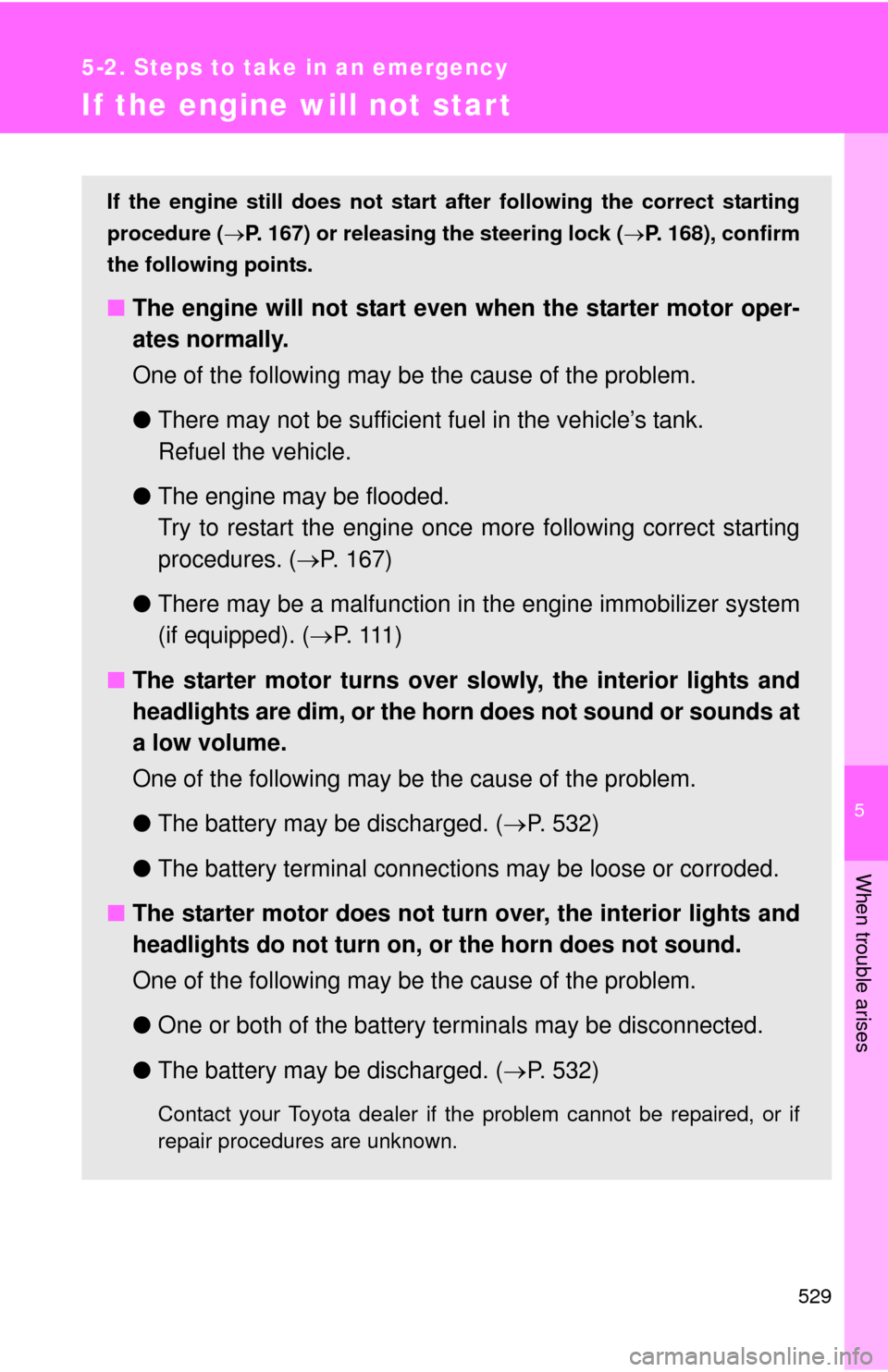Page 213 of 592

213
2-4. Using other
driving systems
2
When driving
■Sensor detection information
●Certain vehicle conditions and the surrounding environment may affect
the ability of the sensor to correctly detect obstacles. Particular instances
where this may occur are listed below.
• There is dirt, snow or ice on the sensor.
• The sensor is frozen.
• The sensor is covered in any way.
• The vehicle is leaning considerably to one side.
• On an extremely bumpy road, on an incline, on gravel, or on grass
• The vicinity of the vehicle is noisy due to vehicle horns, motorcycle
engines, air brakes of large vehicles, or other loud noises producing
ultrasonic waves.
• There is another vehicle equipped with parking assist sensors in the vicinity.
• The sensor is coated with a sheet of spray or heavy rain.
• The vehicle is equipped with a fender pole or wireless antenna.
• The bumper or sensor receives a strong impact.
• The vehicle is approaching a tall or curved curb.
• In harsh sunlight or intense cold weather
In addition to the examples above, there are instances in which, because of
their shapes, signs and other objects may be judged by the sensor to be
closer than they are.
● The shape of the obstacle may prevent the sensor from detecting it. Pay
particular attention to the following obstacles:
• Wires, fences, ropes etc.
• Cotton, snow and other materials that absorb radio waves
• Sharply-angled objects
• Low obstacles
• Tall obstacles with upper sections projecting outwards in the direction
of your vehicle
• Objects just under the bumper
• Objects very close to your vehicle
• A person near the vehicle (depending on the type of clothes worn)
Page 478 of 592
478 4-3. Do-it-yourself maintenance
Fuse layout and amperage ratings■ Engine compartment
FuseAmpereCircuit
1 MAIN 30 A Headlights, daytime running light
system, H-LP RL, H-LP LL
2 AM2 30 A INJ, IGN, GAUGE 2
3 ETCS 10 A Multiport fuel injection system/
sequential multiport fuel injection
system
4 DRL 20 A Daytime running light system,
H-LP RH, H-LP LH
5 DOOR NO.2 25 A Power door lock system
6 HORN 10 A Horns
7 DOME 10 A Personal/interior lights, vanity
lights, door courtesy lights, luggage
compartment light, engine switch
light, trip information display
Page 529 of 592

5
When trouble arises
529
5-2. Steps to take in an emergency
If the engine will not star t
If the engine still does not start after following the correct starting
procedure ( P. 167) or releasing the steering lock (P. 168), confirm
the following points.
■ The engine will not start even when the starter motor oper-
ates normally.
One of the following may be the cause of the problem.
●There may not be sufficient fuel in the vehicle’s tank.
Refuel the vehicle.
● The engine may be flooded.
Try to restart the engine once more following correct starting
procedures. ( P. 167)
● There may be a malfunction in the engine immobilizer system
(if equipped). ( P. 11 1 )
■ The starter motor turns over slowly, the interior lights and
headlights are dim, or the horn does not sound or sounds at
a low volume.
One of the following may be the cause of the problem.
●The battery may be discharged. ( P. 532)
● The battery terminal connec tions may be loose or corroded.
■ The starter motor does not turn over, the interior lights and
headlights do not turn on, or the horn does not sound.
One of the following may be the cause of the problem.
● One or both of the battery terminals may be disconnected.
● The battery may be discharged. ( P. 532)
Contact your Toyota dealer if the problem cannot be repaired, or if
repair procedures are unknown.
Page 589 of 592
589
What to do if...
What to do if...
A tire puncturesP. 515/P. 5 1 6If you have a flat tire
The engine does not start
P. 529If the engine will not start
P. 1 1 1Engine immobilizer system
P. 532If the battery is discharged
The shift lever cannot be
moved outP. 530If the shift lever cannot be shifted
from P
The engine coolant temperature
gauge enters the red zone
Steam can be seen coming
from under the hood
P. 536If your vehicle overheats
The key is lostP. 531If you lose your keys/wireless
remote control transmitter
The battery runs outP. 532If the battery is discharged
The doors cannot be locked
P. 3 3Front doors
P. 3 7Siding doors
P. 4 7Back door
The horn begins to soundP. 1 1 3Alarm
The vehicle is stuck in
mud or sandP. 539If the vehicle becomes stuck